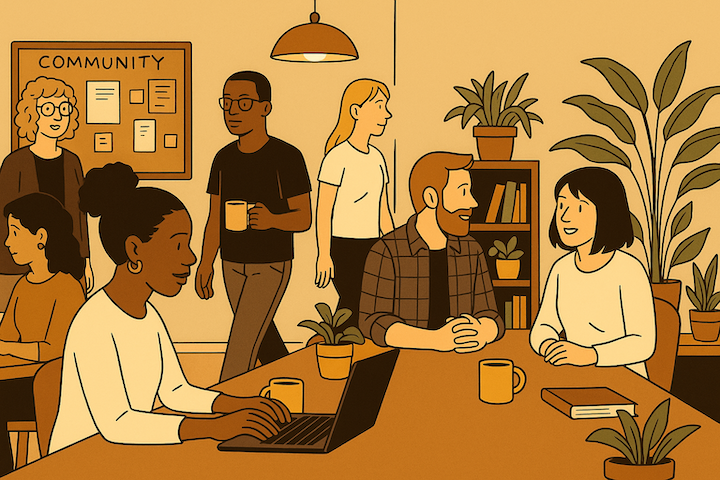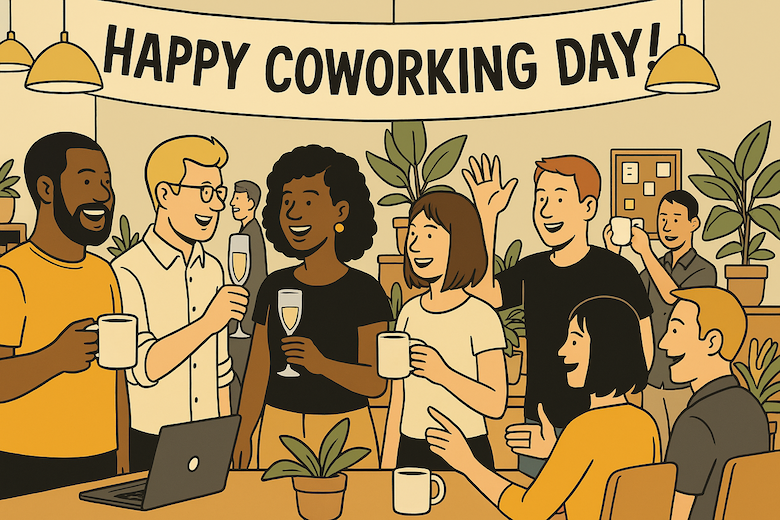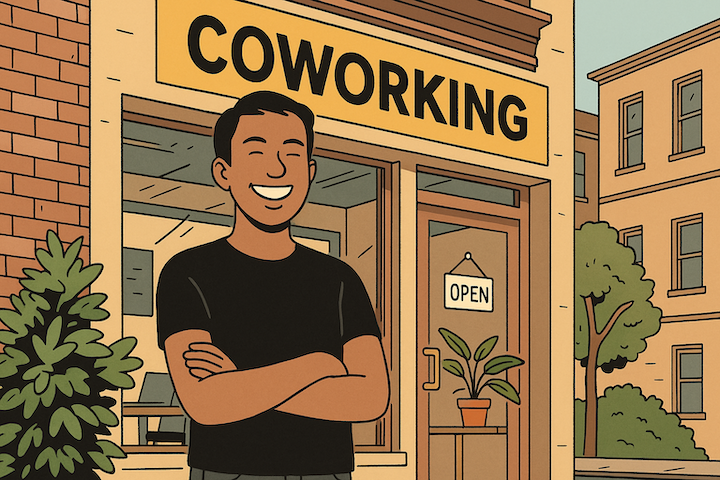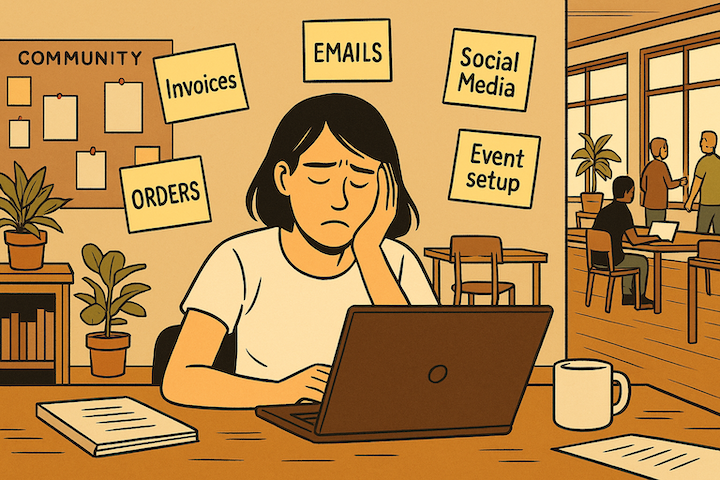Let’s chat about the target audience for your coworking space.
When I made the shift from writing about coworking to being part of the coworking movement and helping coworking space operators with their content marketing and community building, I assumed I was for all coworking spaces.
Granted, at the time, coworking was still a movement rather than the industry it now is, but nonetheless, I made the rookie mistake of thinking I was for everyone.
I now know that being for everyone means you’re not really for anyone.
Through a combination of experience, data, and soul-searching, I’ve learned that my target market is community coworking spaces who are driven by purpose and the potential for coworking to transform lives and towns.
Knowing who I serve and why has freed me up to communicate very clearly to coworking pros who resonate with what I have to say, and not worry about the fact that I’m not for everyone.
In fact, being willing to be “not for everyone” has supercharged my positioning, differentiating, audience building, and business.
I still see a lot of coworking brands making the mistake of trying to be for everyone. You may be able to get away with that in the short-term if you’re the only game in town, but trying to be all things to all people will harm your brand and business in the long run, as the number of coworking spaces and brands grows each day.
Being a generic coworking brand without a clear focus is a recipe for attracting transactional relationships and building a space with zero vibe. If everyone is your target market, you’re not speaking clearly to anyone and you can end up with a lifeless space.
So, here are nine questions to help you clarify the target audience for your coworking space. Grab a notebook and dig in.
1. Why does your coworking space exist?
What gap did you notice in your town, neighborhood, or region that inspired you to open your doors? Was it a lack of professional space for creatives? A desire to bring people out of isolation? A vision to create a community hub? A need to support small business owners? Your origin story holds insights into your purpose and helps attract people who resonate with that story.
2. What are the core values for your coworking business, yourself, and your team?
Values are the invisible forces that shape your culture. Are you committed to local impact? Inclusivity? Creativity? Sustainability? Radical hospitality? Naming your values helps you build a space that operates with intention and attracts people who share those values.
3. Who is your ideal member?
What do your perfect fit members do professionally? How often are they in the space? How do they show up and participate? What vibe do they bring to the room? Think beyond demographics. What’s their mindset? What kind of energy do they contribute? The clearer your vision, the easier it is to attract aligned people and help the ones who aren’t a great fit for your space and community self-select out.
4. If everything went amazingly well, what would your space and community look like?
Imagine your space thriving. What kinds of interactions are happening? What events are buzzing with life? What does the energy feel like when people walk in? Paint a detailed picture. This exercise can help you reverse engineer what needs to happen to get there.
5. What (and who) do you not want in your space?
This one is essential. Are there attitudes, behaviors, or energy that aren’t a good fit for your space? Knowing who you’re not for is just as important as knowing who you are for. It helps you set boundaries, communicate clearly, and create a strong, clear, respectful and engaged culture.
6. What are your unfair advantages that people can’t easily replicate?
Your unfair advantage might be your location, your deep community ties, your team’s hospitality superpowers, or the way your members genuinely connect. What makes your space irreplaceable and special? These unique strengths are your strategic advantage. Lean into them.
7. What impact would you like to make locally?
Are you aiming to support local entrepreneurs? Foster creative culture? Provide space for underrepresented voices? Your community impact can be a huge differentiator and it’s often what turns members into champions for your brand.
8. How are you different from all the alternatives to working in your coworking space (including working from home)?
Get specific. What’s better about working in your space than working from the kitchen table, a coffee shop, or another workspace down the street? Think beyond fast WiFi. Consider accountability, connection, inspiration, motivation, and all the intangibles that add real value.
9. What qualities do your best members share?
Your supermembers are the ones who bring great energy to your space, show up for others, are actively engaged, and elevate the community just by being part of it. What do they have in common? What can you learn from them? Use these insights to shape your messaging, your onboarding, your norms, and even your member guidelines.
Bonus Question
If your space were a person, how would they talk? How would they dress? What kind of people would they hang out with?
Take some time to answer these. Bonus points if you include your team in the exercise so you can gather everyone’s input and engage everyone in the process.
Want more prompts and guidance, as well as a community of coworking pros to bounce ideas off? That’s exactly what we do inside The Lab. Doors are open.
The Coworking Letter
For coworking pros


Get insights, strategies and practical to-do's every Thursday.







